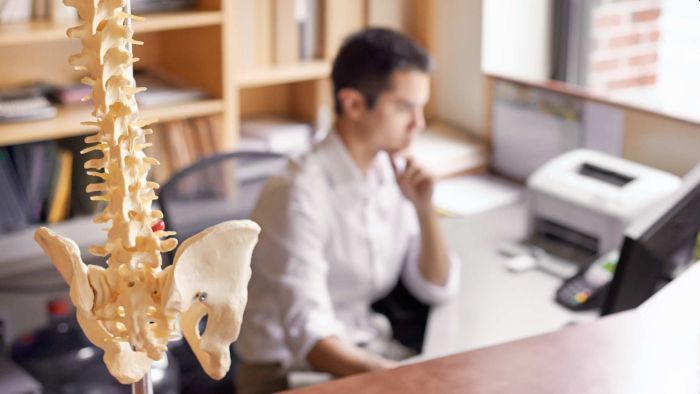Physiotherapy vs Osteopathy – What Helps?
Osteopathy is not osteoporosis. “Osteon” is the Greek word for tissue and “pathos” suffering. There are some similarities between osteopathy and physiotherapy, but also many differences.
Osteopathy and physiotherapy: some similarities and yet so different. We explain how osteopaths work, what makes good physiotherapists in Delhi and how our patients benefit.
This is how an osteopath works and thinks
Osteopathy is a manual application. Osteopaths do not use instruments but examine and treat the patient with their bare hands. By palpation and certain tests, functional disorders in different structures of the body are searched for and treated directly. Osteopathy views the body as a unit. Three major areas are interdependent and mutually influencing.
Parietal osteopathy: includes the treatment of fascia, bones, muscles, tendons and ligaments. For example, joint blockages on the spine and pelvis are treated and tension in the tissue is released.
Visceral osteopathy: includes the treatment of all internal organs, their connective tissue suspension as well as the relationship between the organs and their connections to the parietal system. On the one hand, there may be loss of movement in the organ itself (e.g. constipation) or affected organs may cause complaints to the spine and neighbouring joints, or vice versa. Direct or indirect techniques on the organs loosen adhesions and improve mobility and circulation.
Craniosacral osteopathy: includes the treatment of the skull and sacrum, which are connected to each other by the covering of the spinal cord. Disorders in this system can have a major impact on the lymphatic system, nerve control and blood flow. The osteopath uses very fine techniques to influence the rhythmic pulsation of the brain spinal fluid.
The 3 areas are closely connected. Therefore, the cause of the complaints is often not where the symptoms are perceived. An osteopath therefore wants to find out which compensation patterns the body has appropriated in order to be able to optimally and holistically treat the cause and the subsequent chains.
This is how a physiotherapist works and thinks
After visiting us at the physiotherapy centre in Dwarka, you will surely know a little about our work as physiotherapists. Physiotherapists want to help their patients improve their quality of life. In the examination, they find the cause of pain and loss of movement and help where movement is no longer possible, and pain complicates the everyday life of those affected.
Our physiotherapist in Dwarka also treat in the parietal system. Tendons, fasciae, ligaments, bones, joints and muscles – we physiotherapists are specialists in the musculoskeletal system. In a way, physiotherapists also deal with the visceral system: heart and blood vessels, lungs and lymph. However, physiotherapists treat these organ systems differently than osteopaths. For example, cardiac or pulmonary function is improved with active training or chest mobilization, and lymphatic drainage stimulates the vessels.
In addition to treating the parietal system with manual therapy or device-supported therapy such as shock wave treatment, one thing counts for us physiotherapists: activity! With active therapy, we support our patients on their way back to an eventful life and thus help people to help themselves. Whether medical training therapy in our practice or exercises without devices as a home program – the possibilities are versatile and are individually adapted to the patient.
How do our patients benefit?
Some of our physiotherapists are training in the field of osteopathy. The holistic approach and certain manual treatment techniques from the field of osteopathy naturally flow into the passive treatment. The knowledge of the importance of active therapy and the possibilities that our well-equipped physiotherapy centers bring with them, however, fundamentally differentiate our therapists from osteopaths or osteopathic practices. Our patients also benefit from device-supported therapy methods such as ultrasound or shock waves, the latest training equipment and highly trained physiotherapists who accompany them on their way back to exercise and sport.

